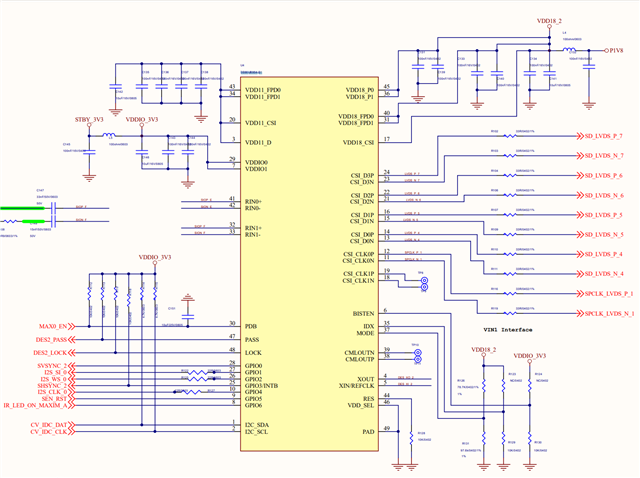Other Parts Discussed in Thread: DS90UB953-Q1
Hi Team,
There is a good new that we DIN DS90UB954-Q1 & DS90UB953-Q1
There is currently a project of rear mirror, using 954 + 953 and then 2-channel camera input!
But the problem is when 2-channel input, the screen will freeze within 10 minutes!
1. I would like to ask if there is any debug register for 954 and 953 to verify which section of the problem is (sensor, 953, 954)
2. Please help check DS90UB954-Q1 SCH, THX
DS90UB954-Q1


